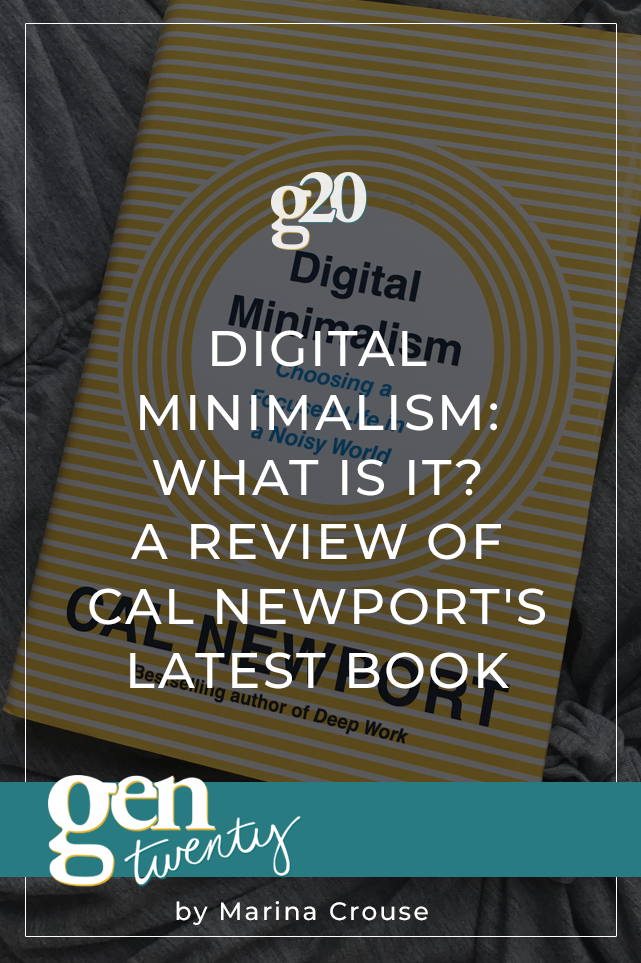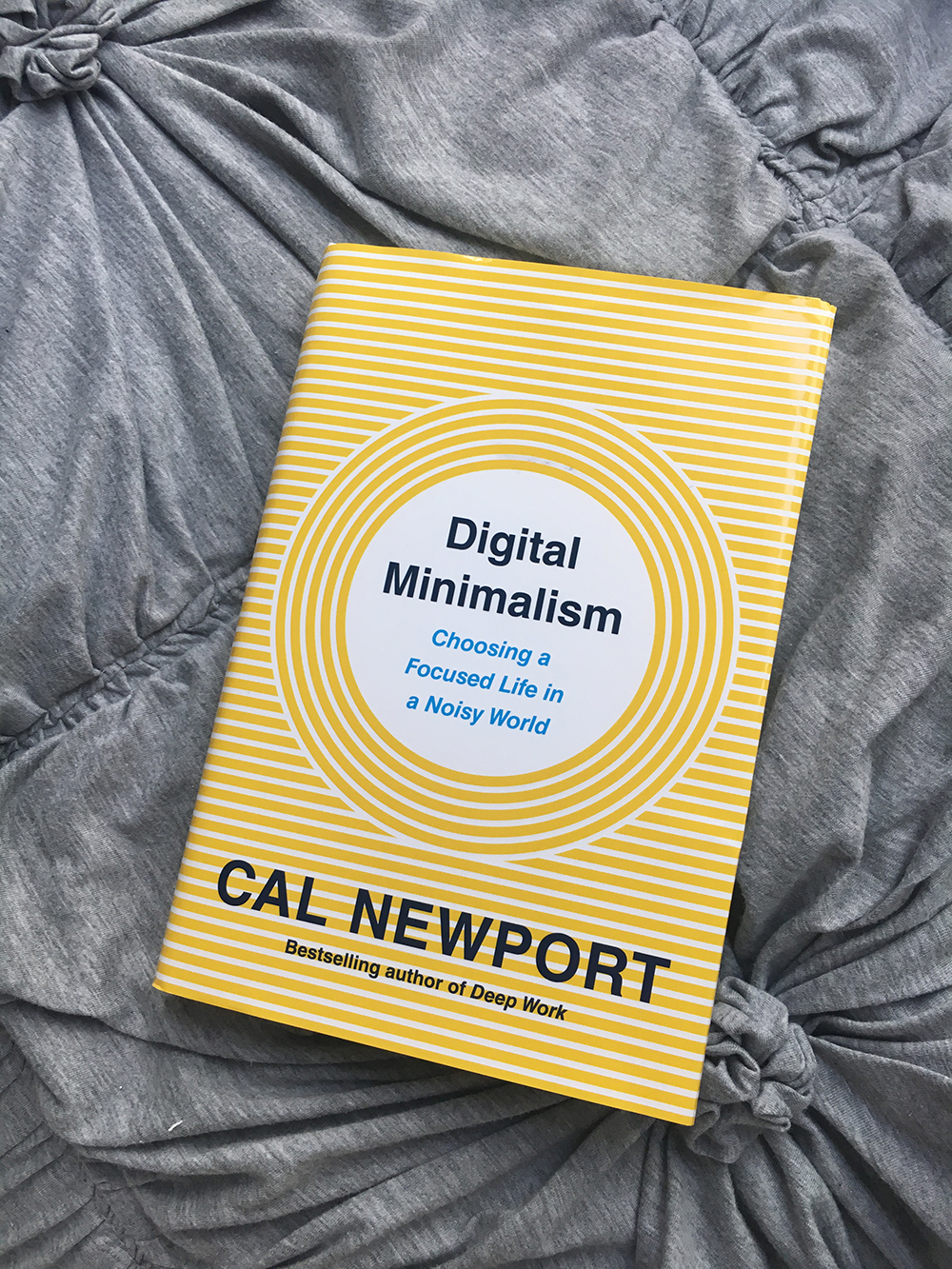
Do you find yourself constantly, compulsively checking or scrolling through your phone? Has the new iPhone “Screen Time” app alerted you to hours and hours you’ve spent on your screen? If you said “yes” to one or both of these questions, I have a book recommendation for you.
A writer friend of mine told me about Cal Newport’s book, Digital Minimalism, when I expressed concern that I wasn’t writing enough, that I felt unfocused, that I felt anxious in my daily life while trying to apply for jobs, stay connected, and work on my novel. I’ve written about my relationship to technology before, and I’m always exploring ways to make my life better, to feel better, and to be the best version of myself. So, I took some time to read Cal Newport’s book and ask some hard questions of myself.
What is digital minimalism? Good question.
According to Newport, digital minimalism is
“a philosophy of technology use in which you focus your online time on a small number of carefully selected and optimized activities that strongly support things you value, and then happily miss out on everything else” (page 28).
Digital Minimalism is a mindset that keeps your actions in line with your values, which I think is something we all have trouble with at times because we get caught up in what is happening around us and lose touch with what truly matters to us.
There are so many ways to “hack” your way to better tech usage, but Cal Newport discusses the need for a permanent change and shift in your habits, usage, and intentions.
His book is broken into two parts: The what/why, and the how.
If you’re struggling with anxiety, I really recommend this read. I am an anxious person in general, but as I spend my days working on job applications or my writing, I find I struggle with the solitude, and feel this hum in my arms as I check my compulsive need to open my phone. I’m now working to consciously rest my mind, allow for time spent thinking or just breathing, without letting myself panic about “productivity.”

Digital Minimalism As a Trend
Ironically, as I set out to read this book, I had the hardest time finding it at the library. I set an intention this year to use my library more and the waitlist for this book in all its forms—ebook, audiobook, and print—was about 50 weeks. That’s basically a year! It seems as though many people are screaming for help and looking for ways to change.
I told my mom about it, an she, a woman who has Instagram and Facebook but uses each sparingly, told me about an article she read about a hotel that was built specifically to minimize tech usage—as in, it had thick walls that prevented any wifi or cell phone reception! When I did a quick google search for “tech free hotels” I received over a million hits about unplugging vacations, tech free hotels, ways to leave your phone behind on vacation.

It seems as though everyone is trying to find balance.
What I liked about Newport’s book was the key message was about needing to not just unplug for a recharge but detox and permanently change your habits to better serve you. It’s all about intention.
He writes about the impact technology has had on our culture and society, and the changes in psychological development. These technologies and apps that are meant to “help” us are actually built to encourage user engagement, even when it becomes a detriment to the user.
Some key takeaways from Newport’s Digital Minimalism helped me understand how I use my phone, and how I will set clear intentions for daily usage based on my values.
One idea that really stuck out was the importance of deciding what really benefits you. If an app “could be helpful” or is “sort-of” helpful, but neither make direct meaningful impacts on your life, then you should try to strip those apps away from your regular use.
He also outlines the three principles of digital minimalism, which are tenants to help guide your technology use.
In practicing a month-long detox, Cal Newport suggests that you will be able to reclaim time and life joys that you may have forgotten about and set better, new, permanent intentions for your future screen-time usage; and you’ll find yourself happier, less anxious, and more productive with these changes you’ve made and intentions you’ve set.
If the average iPhone uses their phone for 3-5 hours a day, scrolling, that’s an extra 20+ hours you could incorporate back into your week to spend on hobbies, real-life interactions, fitness, and other things beyond the screen.
What would you do with an extra 20 hours a week?
I know I’d be able to finish my novel sooner, practice more yoga (or practice yoga at all), and become a better cook. I just have to start making intentional changes, and do it all at once to avoid backsliding into old habits when I feel lonely or fear that I’m missing out on something.
What do you think? Have you read this book? Are you wanting or willing to make big changes? Would you ever do a 30-day detox from your phone and screen to set new intentions?
Let us know! We want to hear from you!
